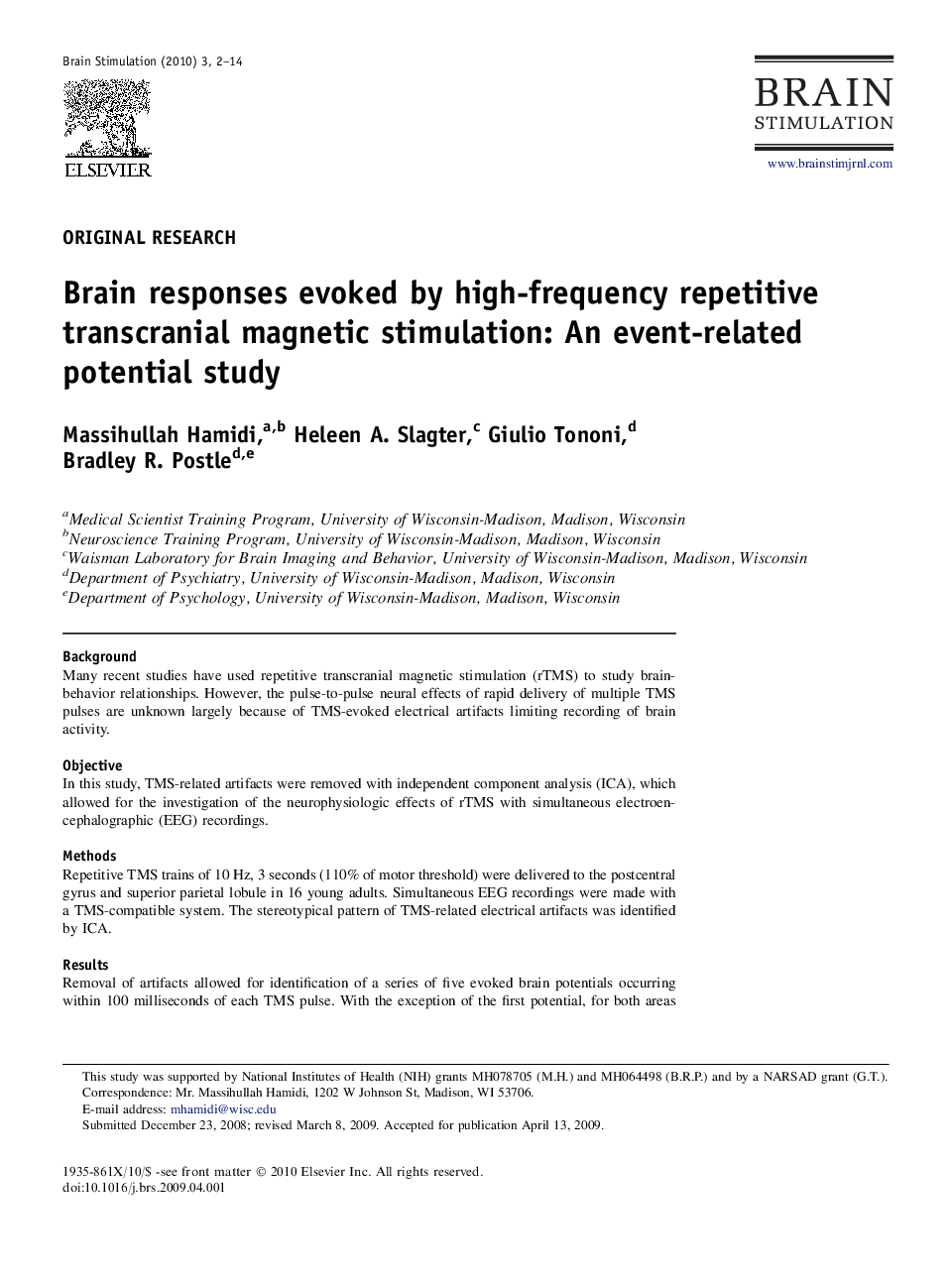| Article ID | Journal | Published Year | Pages | File Type |
|---|---|---|---|---|
| 3039175 | Brain Stimulation | 2010 | 13 Pages |
BackgroundMany recent studies have used repetitive transcranial magnetic stimulation (rTMS) to study brain-behavior relationships. However, the pulse-to-pulse neural effects of rapid delivery of multiple TMS pulses are unknown largely because of TMS-evoked electrical artifacts limiting recording of brain activity.ObjectiveIn this study, TMS-related artifacts were removed with independent component analysis (ICA), which allowed for the investigation of the neurophysiologic effects of rTMS with simultaneous electroencephalographic (EEG) recordings.MethodsRepetitive TMS trains of 10 Hz, 3 seconds (110% of motor threshold) were delivered to the postcentral gyrus and superior parietal lobule in 16 young adults. Simultaneous EEG recordings were made with a TMS-compatible system. The stereotypical pattern of TMS-related electrical artifacts was identified by ICA.ResultsRemoval of artifacts allowed for identification of a series of five evoked brain potentials occurring within 100 milliseconds of each TMS pulse. With the exception of the first potential, for both areas targeted, there was a quadratic relationship between potential peak amplitude and pulse number within the TMS train. This was characterized by a decrease, followed by a rise in amplitude.ConclusionsICA is an effective method for removal of TMS-evoked electrical artifacts in EEG data. With the use of this procedure we found that the physiologic responses to TMS pulses delivered in a high-frequency train of pulses are not independent. The sensitivity of the magnitude of these responses to recent stimulation history suggests a complex recruitment of multiple neuronal events with different temporal dynamics.
